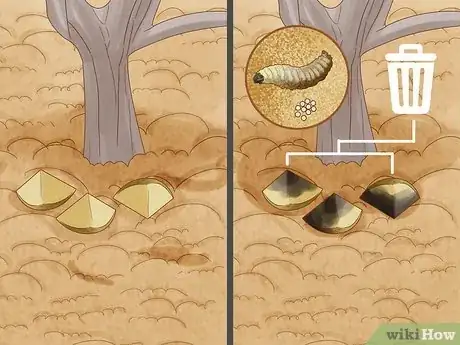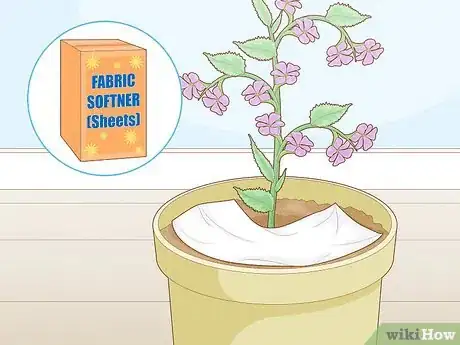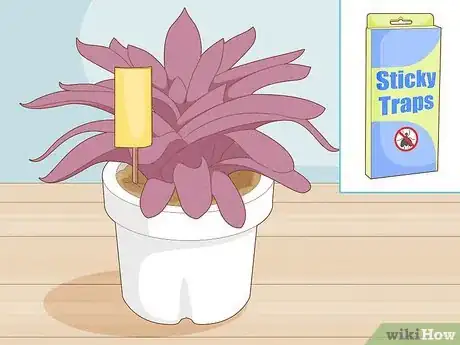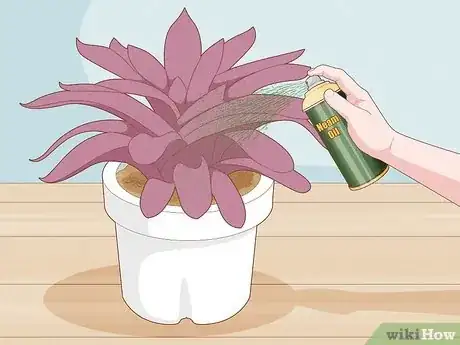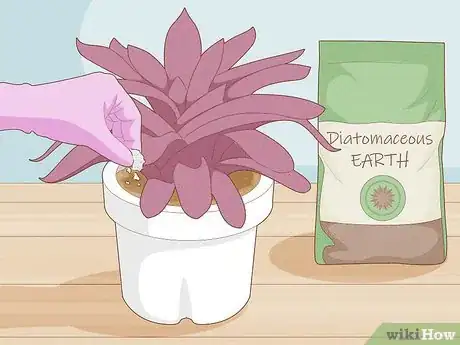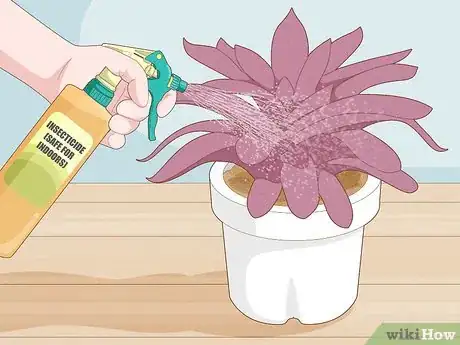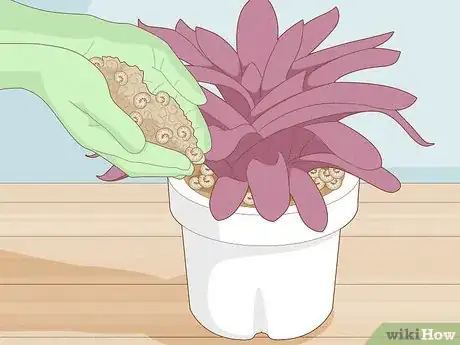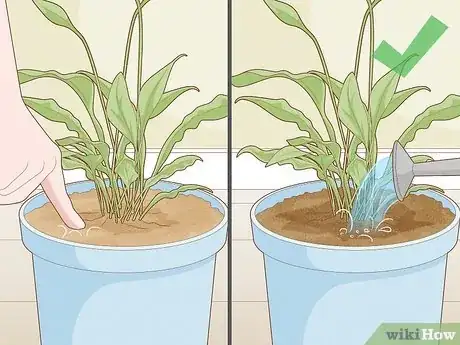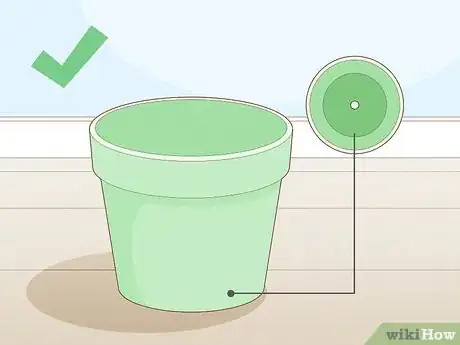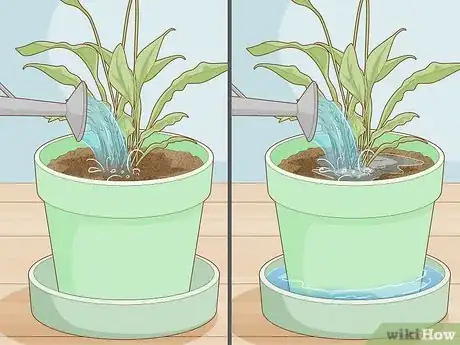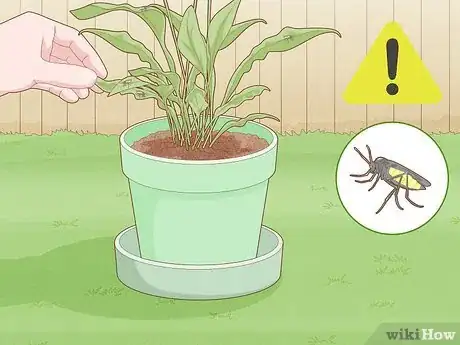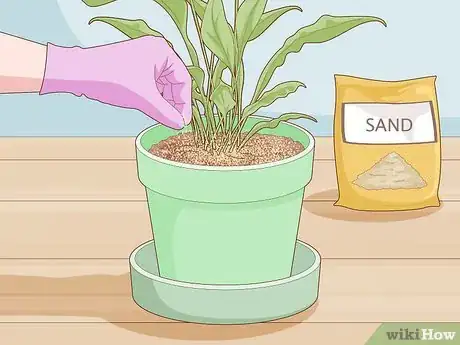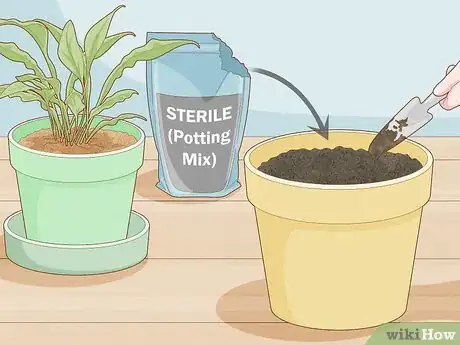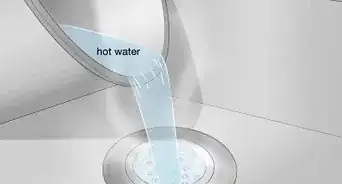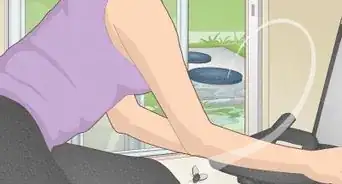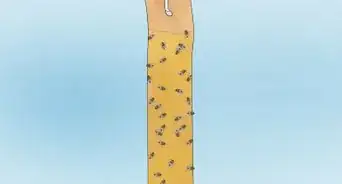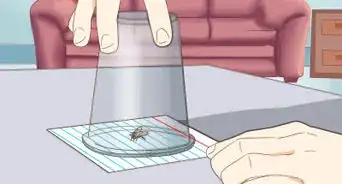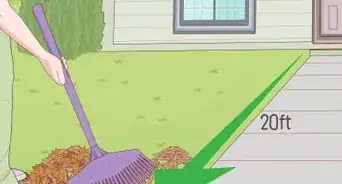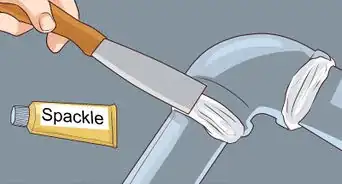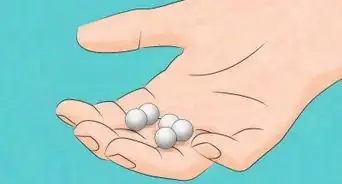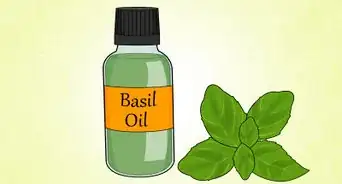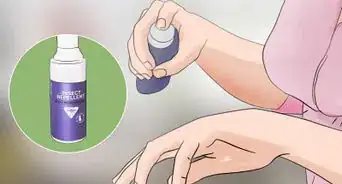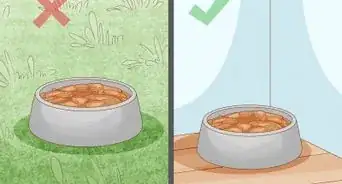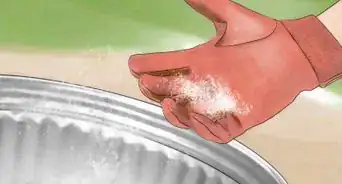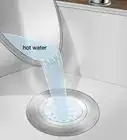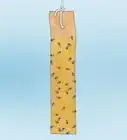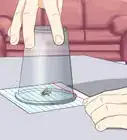This article was co-authored by Kevin Carrillo and by wikiHow staff writer, Hannah Madden. Kevin Carrillo is a Pest Control Specialist and the Senior Project Manager for MMPC, a pest control service and certified Minority-owned Business Enterprise (MBE) based in the New York City area. MMPC is certified by the industry’s leading codes and practices, including the National Pest Management Association (NPMA), QualityPro, GreenPro, and The New York Pest Management Association (NYPMA). MMPC's work has been featured in CNN, NPR, and ABC News.
There are 7 references cited in this article, which can be found at the bottom of the page.
This article has been viewed 124,734 times.
Noticing small, irritating insects on or around your houseplants? Fungus gnats are attracted to moist soil, making them a common pesky problem for plant owners. Fortunately, there are a lot of techniques you can use to get rid of the gnats naturally without using chemicals. In this article, we’ll walk you through how to get rid of fungus gnats, including home remedies and commercial products. We’ll also tell you how to prevent gnats in the future to keep your houseplants gnat-free.
Things You Should Know
- Make a vinegar trap or use potato chunks to kill fungus gnats naturally.
- Try sticky traps and fabric softener sheets to kill and repel gnats.
- Use diatomaceous earth or insecticides to get rid of severe gnat infestations.
- Prevent future gnats by letting the soil dry out and pruning your houseplants regularly.
Steps
Home Remedies
-
1Make a vinegar trap. Pour about 0.5 in (1.3 cm) of apple cider vinegar into a clean plastic cup. Stir in 2 drops of dish soap so that the 2 ingredients are well combined, and place transparent tape over the top of the cup so it’s entirely covered. Poke a small hole in the tape with a thick needle or similar tool so the gnats can fly into the cup and get stuck in the tape.[1]
- The gnats will be attracted to the smell of the mixture and get stuck in the cup. They’ll die after a few hours or so.
- If you have a lot of fungus gnats in your soil, plan to dump out and replace this trap every day or so.
-
2Lure larvae out with potato chunks. Cut a raw potato into chunks, then place the chunks on top of the soil near your plant’s roots. Larvae love to feast on starchy foods, so they’ll be lured out of the soil and onto the potato. After a couple of days, check the chunks for larvae and eggs. If you see any fungus gnats, throw the potato chunks into the trash, then add more potatoes.[2]
- Keep using your potato chunks until there are no more larvae or eggs on the potatoes.
Advertisement -
3Put a fabric softener sheet on top of the soil to repel the gnats. Fabric softener sheets are great for getting rid of gnats because many of them contain linalool, which is a naturally-occurring alcohol found in many flowers and spice plants. Insects are repelled by the smell, which is why they tend to stay away from linalool. Grab a fabric softener sheet and place it on the soil of your houseplant around the roots. The sheet will prevent the gnats from laying their eggs in the soil and the scent will keep them away from your plant.[3]
- Researchers have found that Bounce original fabric softener sheets work best for repelling fungus gnats. However, any fabric softener with linalool will do the trick.
-
4Place yellow sticky traps next to the houseplants. Yellow sticky traps catch fungus gnats as they fly around your plants. Use a wooden skewer to place your sticky trap into the soil of your houseplant, then wait a couple of days. Replace the trap whenever it gets full.[4]
- Sticky traps kill adult fungus gnats, but they won’t kill the larvae or the eggs in the soil.
-
5Spray the plants with neem oil. Neem oil is a natural oil made from the seeds of a neem tree. Buy a bottle of neem oil and dilute it with water according to the instructions on the bottle. Then, spray the soil and the leaves of your plant once a day to naturally repel fungus gnats.[5]
- Neem oil is not toxic, so it’s safe to use around children and pets.
-
6Mix food-grade diatomaceous earth into the soil to kill the gnats. Purchase diatomaceous earth that's non-toxic from a local garden or home improvement store. Follow the instructions that come with the diatomaceous earth and mix it into your houseplant's soil, or just spread it on the top layer of soil so it's about 1 in (2.5 cm) thick.[6]
- Wear a mask when you're mixing the diatomaceous earth in with your soil, if possible, so you're not breathing it in.
- Diatomaceous earth is a natural type of ground-up rock that is great for pest control.
-
7Spray an insecticide on your houseplants. Purchase an insecticide spray that’s safe for your type of houseplant. Mist the plant with the spray thoroughly, focusing it on the soil because this is where the gnats like to lay their eggs.[7]
- The instructions will tell you how often to use the insecticide and how much you should spray on your plant. Typically, you’ll use the insecticide once a day for 1 week.
-
8Purchase bugs that prey on gnats to get rid of them for a natural option. Biological controls include things like nematodes, mites, or rove beetles which will prey on the gnats. Look for these at a bug or organic pest control store and release them into the soil to let them do their job.[8]
- Ask the professional who sells you the nematodes, mites, or beetles any questions you might have so you feel prepared to use them.
Preventing Gnats
-
1Let the plant’s soil dry out between waterings. If your houseplant’s soil is always wet or damp, this will attract gnats. Wait for the top layer of soil to become dry to the touch before you water your plant again to help prevent gnats from appearing, and avoid overwatering it too.[9]
- To quickly dry out your soil, point a fan at your plants.
- Try watering your plants from the bottom up. Fill up a bowl or a sink with water, then dip the bottom of your plant into it. After a few minutes, take your plant out of the water and let it drain.
-
2Use pots that have good drainage. It’s important for your plant’s pot to have holes in the bottom so the extra water can drain out. Pick out a pot that has at least one drainage hole in the bottom. If you're using a pot that doesn't have any drainage holes, it’s best to transfer the plant to a new pot that does so it will stay healthy.[10]
- Pots with drainage holes also help prevent root rot, which can kill plants over time.
-
3Pour out the excess water that gathers in saucers. If your houseplant is sitting in a saucer that catches the extra water after you water the plant, empty these once all of the water has drained through the soil. If you leave the water sitting in the saucer, it can attract more gnats.[11]
- Wait a few minutes after you water the plant before emptying the saucer so the soil has time to drain.
-
4Prune your houseplants so the dead pieces don’t start decaying. If leaves or flower petals from your plants fall off, pick them up out of the soil as soon as you see them and discard them. Once parts of your plant fall off and start to decay in the soil, it’ll attract the gnats.[12]
- Check your houseplants each day to pick up any dead plant material.
- Consider composting the dead plant material or throwing it in the trash if composting isn't possible.
-
5Check your plants for bugs before bringing them inside. Whether you’re purchasing a new houseplant or bringing a plant that was outdoors inside, examine them closely before you set them in your house. Look for any bugs, gnats, or other pests that might be on them and remove these if possible.[13]
- If your plant is infested with bugs, it’s best to not bring it inside.
-
6Sprinkle a layer of sand over the soil to keep gnats from laying eggs. Gnats don’t like laying their eggs in sand because it dries out quickly and has a rough texture. Add a layer of sand that’s about 1–2 cm (0.39–0.79 in) thick, covering the soil thoroughly so the gnats can't reach it.[14]
- You could also use aquarium pebbles or gravel instead of sand.
-
7Use a sterile potting mix when it's time to repot your houseplants. When it's time to repot your houseplant to give it fresh soil, place your plant in the sterile mix. Sterile potting soil will help prevent gnats and keep your plant healthy.[15]
- If you've noticed an increase in gnats, it's a good idea to repot your plant with the sterile soil, even if it's not time for a repotting yet.
Expert Q&A
Did you know you can get premium answers for this article?
Unlock premium answers by supporting wikiHow
-
QuestionWhat causes gnats in potted plants?
 Kevin CarrilloKevin Carrillo is a Pest Control Specialist and the Senior Project Manager for MMPC, a pest control service and certified Minority-owned Business Enterprise (MBE) based in the New York City area. MMPC is certified by the industry’s leading codes and practices, including the National Pest Management Association (NPMA), QualityPro, GreenPro, and The New York Pest Management Association (NYPMA). MMPC's work has been featured in CNN, NPR, and ABC News.
Kevin CarrilloKevin Carrillo is a Pest Control Specialist and the Senior Project Manager for MMPC, a pest control service and certified Minority-owned Business Enterprise (MBE) based in the New York City area. MMPC is certified by the industry’s leading codes and practices, including the National Pest Management Association (NPMA), QualityPro, GreenPro, and The New York Pest Management Association (NYPMA). MMPC's work has been featured in CNN, NPR, and ABC News.
MMPC, Pest Control Specialist Gnats tend to be attracted to decaying organic matter and moisture, both of which are often found in potted plants. This problem can get especially bad if you're over-watering your plants. Try to cut back on how often you're watering your plants if you can. If you can't, at least set a dehumidifier out near your plants. Always pick up any dead leaves or decaying plant matter if you find anything in your soil.
Gnats tend to be attracted to decaying organic matter and moisture, both of which are often found in potted plants. This problem can get especially bad if you're over-watering your plants. Try to cut back on how often you're watering your plants if you can. If you can't, at least set a dehumidifier out near your plants. Always pick up any dead leaves or decaying plant matter if you find anything in your soil.
Warnings
- If you're using an insecticide on your houseplants, make sure you follow the directions to ensure you're using it safely. Insecticides can be toxic, so keep them away from pets and children.⧼thumbs_response⧽
References
- ↑ https://www.bobvila.com/articles/how-to-get-rid-of-fungus-gnats/
- ↑ http://ipm.ucanr.edu/PMG/PESTNOTES/pn7448.html
- ↑ https://ipm.missouri.edu/MEG/2011/5/Bounce-Away-Fungus-Gnats/
- ↑ http://www.missouribotanicalgarden.org/gardens-gardening/your-garden/help-for-the-home-gardener/advice-tips-resources/pests-and-problems/insects/flies/fungus-gnats.aspx
- ↑ https://www.bobvila.com/articles/how-to-get-rid-of-fungus-gnats/
- ↑ https://bookstore.ksre.ksu.edu/pubs/mf2937.pdf
- ↑ http://www.missouribotanicalgarden.org/gardens-gardening/your-garden/help-for-the-home-gardener/advice-tips-resources/pests-and-problems/insects/flies/fungus-gnats.aspx
- ↑ Kevin Carrillo. MMPC, Pest Control Specialist. Expert Interview. 22 October 2019.
- ↑ Kevin Carrillo. MMPC, Pest Control Specialist. Expert Interview. 22 October 2019.
- ↑ Kevin Carrillo. MMPC, Pest Control Specialist. Expert Interview. 22 October 2019.
- ↑ http://ipm.ucanr.edu/PMG/PESTNOTES/pn7448.html
- ↑ http://www.missouribotanicalgarden.org/gardens-gardening/your-garden/help-for-the-home-gardener/advice-tips-resources/pests-and-problems/insects/flies/fungus-gnats.aspx
- ↑ http://www.missouribotanicalgarden.org/gardens-gardening/your-garden/help-for-the-home-gardener/advice-tips-resources/pests-and-problems/insects/flies/fungus-gnats.aspx
- ↑ https://extension.unl.edu/statewide/douglas-sarpy/pdfs/ce/resources/ce-how-to-control-fungus-gnats.pdf
- ↑ http://ipm.ucanr.edu/PMG/PESTNOTES/pn7448.html

